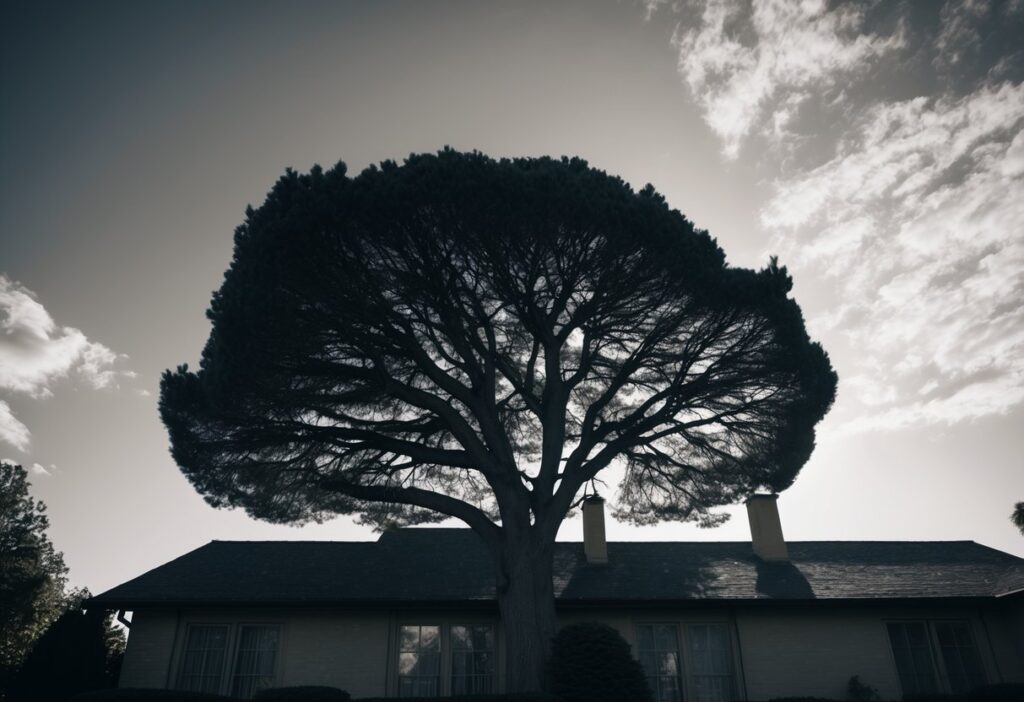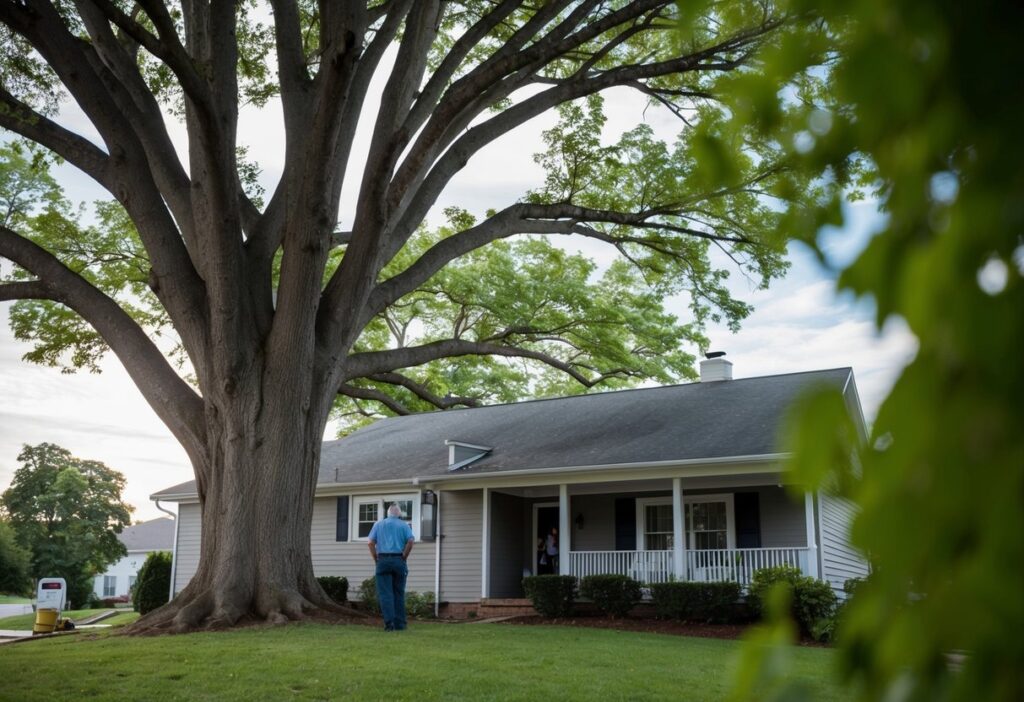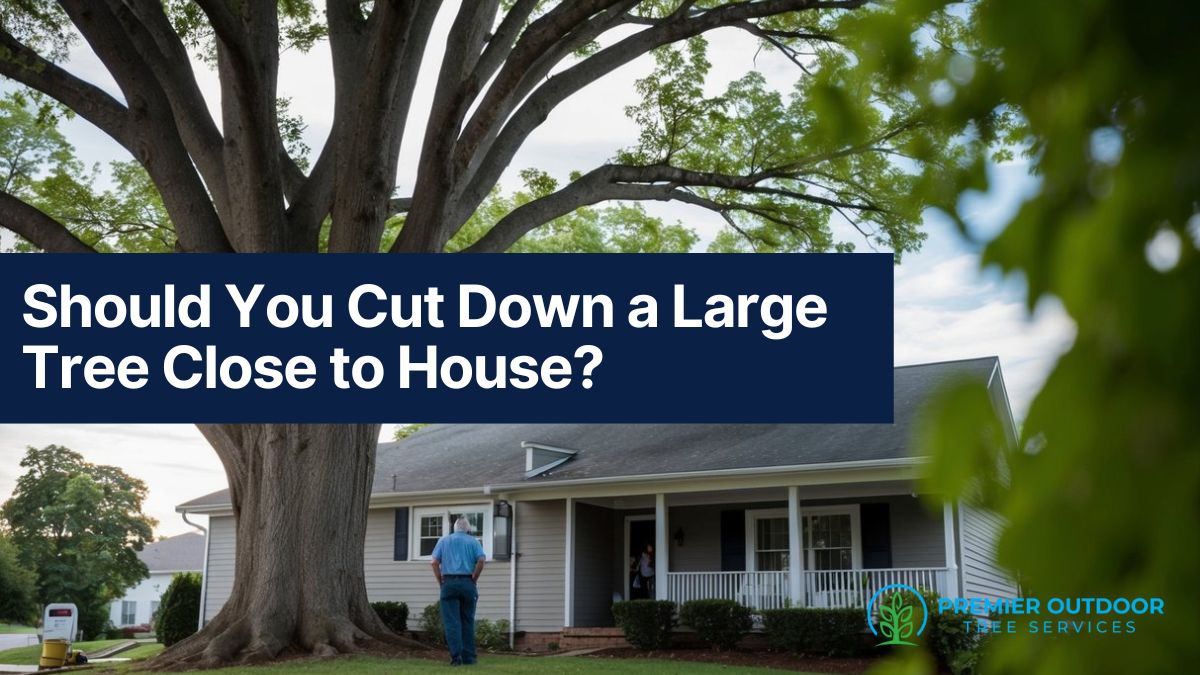Trees near houses can be beautiful, but they can also pose risks. You might wonder if you should cut down a large tree close to your home. Removing a tree near your house is often necessary for safety reasons, but it’s not a decision to make lightly.
Big trees can damage your home’s foundation, drop branches on your roof, or fall during storms. They can also block sunlight and make your house damp. But trees also provide shade, clean air, and homes for wildlife.
Before you decide to cut down a tree, consider its health, size, and location. Look for signs of disease or damage. Consider how close it is to your house and power lines. If you’re unsure, ask a tree expert, such as Premier Outdoor Tree Services, for advice.
Key Takeaways
- Large trees near houses can pose safety risks and property damage
- Evaluate the tree’s health, size, and location before deciding to remove it
- Consult a professional arborist for expert advice on tree removal

Evaluating the Necessity of Tree Removal
Deciding whether to cut down a large tree near your house requires careful thought. You’ll need to consider the tree’s health, safety risks, and growth.
Assessing Tree Health
Check your tree for signs of poor health. Look for dead branches, peeling bark, or mushrooms growing at the base. This can mean the tree is sick or dying.
Gaps in the canopy or leaves that turn yellow too early are also red flags. A tree with many dead branches may be past saving.
If you need more clarification, call an arborist. They can tell you if the tree can be saved or if it needs to go.
Identifying Potential Hazards
Large trees close to houses can be risky. Look for branches that hang over your roof or power lines. These could fall and cause damage.
Check if the tree leans towards your house. This might mean unstable roots.
After storms, look for cracks in the trunk or lifting soil around the base. These are signs that the tree might fall.
If you spot these issues, it’s time to think about removal.
Understanding Tree Growth and Root Systems
Know how big your tree species gets. Some trees keep growing and may need to be bigger for their spot.
Root systems can spread far. They might damage your home’s foundation, pipes, or driveway.
Some trees drop a lot of leaves, fruits, or seeds. This can clog gutters or make a mess.
Think about future growth. A young tree may fit now but could cause problems as it gets bigger.

The Impacts of Tree Proximity to the Home
Trees close to houses can cause serious problems. They may damage property, hurt foundations, and mess with utility lines. It’s important to know these risks.
Risks of Property Damage
Big trees near your home can be risky. Strong winds might break branches or topple the whole tree onto your roof, causing costly damage. Falling limbs can smash windows or dent siding. Leaves and twigs clog gutters, leading to water damage.
Tree roots can also be a problem. They may crack driveways or patios as they grow. Deep-rooted trees can fall more easily in storms, putting your house in danger.
To stay safe, trim branches away from your roof, remove dead limbs quickly and consider removing trees that lean toward your house.
Foundation Damage Considerations
Tree roots can harm your home’s foundation. As roots grow, they push against foundation walls, causing cracks or shifts. Water then seeps in, making the problem worse.
Some trees are worse than others. Oaks, elms, and maples have big, spreading roots. These can lift concrete and damage pipes.
To protect your foundation:
- Plant new trees at least 20 feet from your house
- Put root barriers around existing trees
- Water deeply but less often to encourage deep roots
- Remove problem trees if needed
Interference with Utility Lines
Trees can damage power, phone, and cable lines. Branches touching wires can cause outages, and in storms, falling limbs may snap lines completely.
Roots can wrap around pipes underground, blocking or breaking water and sewer lines. Fixing these issues is often expensive and disruptive.
To avoid trouble:
- Keep trees trimmed away from overhead lines
- Call before you dig to locate underground utilities
- Choose small trees for planting near utility areas
- Work with your local utility company on tree care
Regular tree care helps prevent many of these issues. Pruning, proper watering, and smart planting choices make a big difference.
Hiring a Professional Tree Service
Cutting down a large tree near your house can be risky. It’s best to hire a professional tree service for this job. They have the right tools and know-how to do it safely.
When looking for a tree service, ask friends for recommendations. You can also check online reviews. Make sure the company is licensed and insured.
A good tree service will:
- Assess the tree’s health and structure
- Plan the safest way to cut it down
- Use proper equipment like cranes or bucket trucks
- Clean up and remove all debris
The cost depends on the tree’s size and location. Expect to pay more for a tree close to your house. However, safe tree removal is worth the expense.
Before work starts, clear the area around the tree. Move cars, outdoor furniture, and any valuable items. This gives the crew space to work and keeps your things safe.
Remember, cutting down trees is dangerous. Don’t try to do it yourself if you’re not trained. Contacting a company like Premier Outdoor Tree Services, a professional tree removal service in Orlando, is the safest choice for removing large trees near your home.

